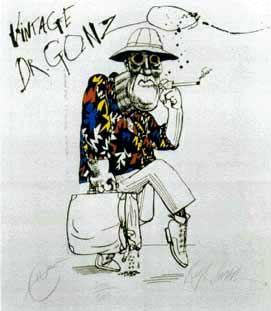Stop the train I'm leaving
 It seems like every time someone tries to resuscitate any segment of New York’s once-booming rail system, there’s some act of legislative incompetence or freak of nature that, metaphorically speaking, seems to derail it. Such appears to be the case with Saratoga County Economic Development Corporation’s lengthy attempts to revive scenic passenger trains from the Spa City to North Creek.
It seems like every time someone tries to resuscitate any segment of New York’s once-booming rail system, there’s some act of legislative incompetence or freak of nature that, metaphorically speaking, seems to derail it. Such appears to be the case with Saratoga County Economic Development Corporation’s lengthy attempts to revive scenic passenger trains from the Spa City to North Creek.On the outside, the plan seems simple. Consolidate an already-existing 54-mile stretch of rail, pump in some federal dollars and pretty soon packs of cognac-sipping skiers will be jumping aboard 60s-era diesel trains in Saratoga Springs for a quick ride up to the trails at Gore Mountain.
Warren County took the first plunge back in 1999, successfully running a train south from North Creek down an 8-mile stretch of track to the small hamlet of Riparious. Then last week, the Upper Hudson River Railroad ran its first train to Stony Creek, which is about 28 miles further south or about half the distance between Gore and Saratoga Springs
But nearly a decade after late-Congressman Gerald Solomon proposed the idea of a two-county scenic rail line, the Saratoga connection continues to falter for one reason or another. The most recent snag has left a paltry 300-foot segment of the proposed trail route quite literally hanging in mid-air.
 As many might recall, a sudden down pour in May lead to the breach of what was widely reported as a beaver dam, causing more than $100,000 worth of damage to roads in the town of Greenfield. But it turned out to be the 16-mile segment of rail bed purchased by the town of Corinth last winter that was responsible for holding back the water –although some officials maintain the beavers were responsible for plugging culverts that would have otherwise drained the situation.
As many might recall, a sudden down pour in May lead to the breach of what was widely reported as a beaver dam, causing more than $100,000 worth of damage to roads in the town of Greenfield. But it turned out to be the 16-mile segment of rail bed purchased by the town of Corinth last winter that was responsible for holding back the water –although some officials maintain the beavers were responsible for plugging culverts that would have otherwise drained the situation.Now, as both the Times Union and Daily Gazette have reported, the segment of tracks hangs uselessly in the air and requires untold amounts of repair. Canadian-Pacific apparently has a one-year deal with the town to maintain the tracks, but Corinth officials haven’t been able to contact them for one reason or another. And chances are pretty good that neither side is in any rush to discuss the washed-out rail bed.
It’s highly unlikely that any of the private or public lands affected by the ruptured bed had flood insurance, meaning most if not all of the losses suffered went uninsured. This means whichever entity fesses up to the responsibility of maintaining the tracks could very well end up in lengthy litigation with anyone of the many who sustained damage from the cascading rainwater.
Given this quandary, the Saratoga-Gore rail line is likely to languish as either an afterthought or in litigation of some kind, an unfortunate circumstance given the modest success Warren County has experienced with their segment of the railroad.
Such trains are quite the boon for small rural towns struggling to maintain themselves in a state nearly devoid of industry. This isn’t even considering the planned $200 million ski bowl expansion at Gore, which proposes to bring a gondola within walking distance of the North Creek train station. That could turn out to be a tourism gold mine for any of the municipalities located along the paltry 26 miles of rail remaining between the city and the slopes.
 But without someone cracking the whip, these projects seem to move a pace that’s lethargic by even glacial standards, simply sucking up taxpayer dollars at every level imaginable but never coming to fruition. Unfortunately, there doesn’t appear to be anyone too interested in picking up the whip, aside from Saratoga County’s Jack Kelley, who’s been trying to crack it for years.
But without someone cracking the whip, these projects seem to move a pace that’s lethargic by even glacial standards, simply sucking up taxpayer dollars at every level imaginable but never coming to fruition. Unfortunately, there doesn’t appear to be anyone too interested in picking up the whip, aside from Saratoga County’s Jack Kelley, who’s been trying to crack it for years.


1 Comments:
I'm flabbergasted that the Saratoga Springs to North Creek run is being considered ahead of much more relevant rail improvements in our state. This is a prime example of how some want to adapt to the twilight of the cheap transportation era! Any infusion of capital to the rail industry should be in the form of encouraging rail transportation of goods that cannot be produced locally (no 3000-mile Caesar Salads during the summer, when we can produce more romaine than we can eat right here in Saratoga County), and to upgrade commuter transit lines. Perhaps re-introduce light rail based on electricity (which doesn't rely on oil for enegry generation). Ideally, reshape the context of our economy so people do meaningful work and conduct commerce within their walkshed. Tourism should be a co-product, not the prime force behind development of rail. And tourism to a downhill ski resort? I don't mean to dis those that still buy $60 lift tickets to have some particulate-spewing diesel-powered chairlift whisk them up hills covered by artificial snow made from atomized water pumped from a catch-basin and pressurized thru noisy nozzles, but what the heck is wrong with this picture? Perhaps the only more energy intensive form of entertainment is those NASCAR races where people pay to watch others drive in circles spewing greenhouse and noxious gases into the atmosphere. We're Addicted to Oil in some pretty perverse ways.
I can no longer justify having an auto or bus (or train?) run for two hours to go to a mountain where I pay oodles of money to have yet another machine (the gondola or chairlift) do the work I could do myself (if I didn't spend two hours getting there). To me this seems like a totally selfish act. When I lived in Colorado, I went snowboaring over thirty days a year, and the best days were those that I got up at 5am on a May morning, climbed 3000 vertical feet in 2.5 hours to just over 14,000 ft. and made about sixty backcountry turns down a spring snow couloir before the snow turned to mush, and then hiked out. We carpooled there and back and gas was $1.50/gallon. Now, I can't get excited about going to any resort. Last year, the only skiing I did was cross-country, mostly within a short walk from my house, and sometimes I even had my dog ski-jor with me. Or I'd snowshoe.
Now these types of activities may not be for everyone--especially if you look at the average fitness level of we mechanized Americans who won't let our children walk or ride to school or look at how the automobile has supremacy over all aspects of "modern" planning paradigms--but to actually encourage it with a train? That's like giving an addict a syringe so he's ready for the next fix. It's like Shenendehowa blowing its own school bus horns because the centralized, mega-campus is getting a hybrid bus for testing next fall. Throwing technology around will not get around the fact that there is a finite amount of fuel available to run these machines, even if they do get 3 MPG better mileage than their non-hybrid cousins. It won't address the problem of obesity in students who are forced to ride buses or ride in mommy's car. It won't address the problem of unexercised, restless kids in the classroom, and it won't help them develop a sense of transportation independence that, to them, only comes when they get their driver's license and a car to use. Shen's centralized school system is a relic of the age of cheap transportation. It made sense back when it was designed (perhaps so, too, did suburbia, the "Green" revolution, and communism). Now, though, I think I'd rather homeschool my kids and take them on long nature hikes as part of their curriculum. Imagine if they (or even I) could safely walk downtown or even to the neighborhood store to get a popsicle on a hot, sultry summer's day... Oops, I forgot: zoning scaled to the range of an automobile trip doesn't allow for the neighborhood store in "modern" suburbia.
Trains, like hammers, are great. But a hammer can destroy that which is dear with the same motion that it can be used to build something that's needed. The internal combustion engine is great for things like tractors and prop-planes, but is it a good way to transport goods across continental distances? I assert that our rail priority should be on moving essential freight (both raw materials and manufactured goods) from a zone of plenty to one of scarcity, then on moving people to where they need to go to maintain their livelihood, and only after those conditions are met, should we devote precious resources to entertainment and recreation, which abounds in many other forms locally if we allow ourselves to create, nurture, and experience it. There seems to be so much dissatisfaction because we're here, but we want to be there. Surrender to the here and now. It's all we have!
Post a Comment
<< Home